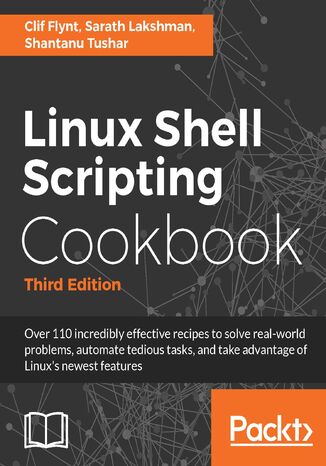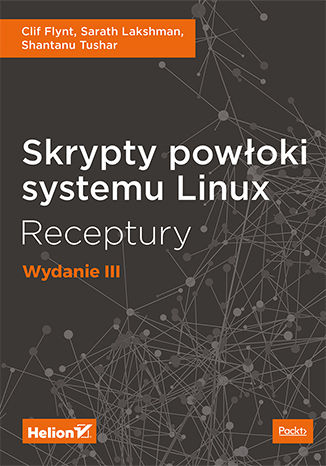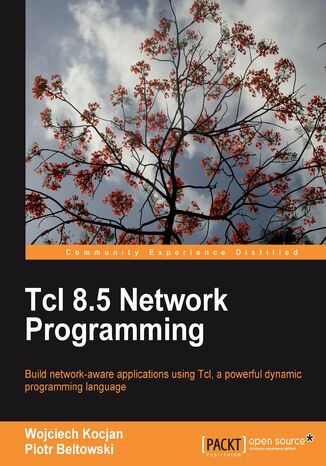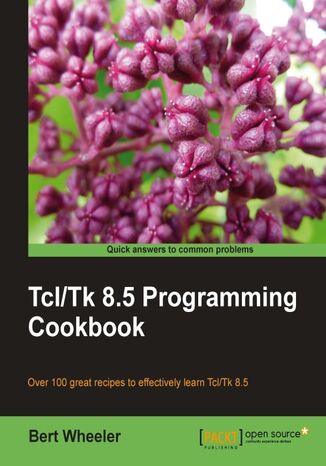Categories
Ebooks
-
Business and economy
- Bitcoin
- Businesswoman
- Coaching
- Controlling
- E-business
- Economy
- Finances
- Stocks and investments
- Personal competence
- Computer in the office
- Communication and negotiation
- Small company
- Marketing
- Motivation
- Multimedia trainings
- Real estate
- Persuasion and NLP
- Taxes
- Social policy
- Guides
- Presentations
- Leadership
- Public Relation
- Reports, analyses
- Secret
- Social Media
- Sales
- Start-up
- Your career
- Management
- Project management
- Human Resources
-
For children
-
For youth
-
Education
-
Encyclopedias, dictionaries
-
E-press
- Architektura i wnętrza
- Health and Safety
- Biznes i Ekonomia
- Home and garden
- E-business
- Ekonomia i finanse
- Esoterecism
- Finances
- Personal finance
- Business
- Photography
- Computer science
- HR & Payroll
- For women
- Computers, Excel
- Accounts
- Culture and literature
- Scientific and academic
- Environmental protection
- Opinion-forming
- Education
- Taxes
- Travelling
- Psychology
- Religion
- Agriculture
- Book and press market
- Transport and Spedition
- Healthand beauty
-
History
-
Computer science
- Office applications
- Data bases
- Bioinformatics
- IT business
- CAD/CAM
- Digital Lifestyle
- DTP
- Electronics
- Digital photography
- Computer graphics
- Games
- Hacking
- Hardware
- IT w ekonomii
- Scientific software package
- School textbooks
- Computer basics
- Programming
- Mobile programming
- Internet servers
- Computer networks
- Start-up
- Operational systems
- Artificial intelligence
- Technology for children
- Webmastering
-
Other
-
Foreign languages
-
Culture and art
-
School reading books
-
Literature
- Antology
- Ballade
- Biographies and autobiographies
- For adults
- Dramas
- Diaries, memoirs, letters
- Epic, epopee
- Essay
- Fantasy and science fiction
- Feuilletons
- Work of fiction
- Humour and satire
- Other
- Classical
- Crime fiction
- Non-fiction
- Fiction
- Mity i legendy
- Nobelists
- Novellas
- Moral
- Okultyzm i magia
- Short stories
- Memoirs
- Travelling
- Narrative poetry
- Poetry
- Politics
- Popular science
- Novel
- Historical novel
- Prose
- Adventure
- Journalism, publicism
- Reportage novels
- Romans i literatura obyczajowa
- Sensational
- Thriller, Horror
- Interviews and memoirs
-
Natural sciences
-
Social sciences
-
School textbooks
-
Popular science and academic
- Archeology
- Bibliotekoznawstwo
- Cinema studies
- Philology
- Polish philology
- Philosophy
- Finanse i bankowość
- Geography
- Economy
- Trade. World economy
- History and archeology
- History of art and architecture
- Cultural studies
- Linguistics
- Literary studies
- Logistics
- Maths
- Medicine
- Humanities
- Pedagogy
- Educational aids
- Popular science
- Other
- Psychology
- Sociology
- Theatre studies
- Theology
- Economic theories and teachings
- Transport i spedycja
- Physical education
- Zarządzanie i marketing
-
Guides
-
Game guides
-
Professional and specialist guides
-
Law
- Health and Safety
- History
- Road Code. Driving license
- Law studies
- Healthcare
- General. Compendium of knowledge
- Academic textbooks
- Other
- Construction and local law
- Civil law
- Financial law
- Economic law
- Economic and trade law
- Criminal law
- Criminal law. Criminal offenses. Criminology
- International law
- International law
- Health care law
- Educational law
- Tax law
- Labor and social security law
- Public, constitutional and administrative law
- Family and Guardianship Code
- agricultural law
- Social law, labour law
- European Union law
- Industry
- Agricultural and environmental
- Dictionaries and encyclopedia
- Public procurement
- Management
-
Tourist guides and travel
- Africa
- Albums
- Southern America
- North and Central America
- Australia, New Zealand, Oceania
- Austria
- Asia
- Balkans
- Middle East
- Bulgary
- China
- Croatia
- The Czech Republic
- Denmark
- Egipt
- Estonia
- Europe
- France
- Mountains
- Greece
- Spain
- Holand
- Iceland
- Lithuania
- Latvia
- Mapy, Plany miast, Atlasy
- Mini travel guides
- Germany
- Norway
- Active travelling
- Poland
- Portugal
- Other
- Przewodniki po hotelach i restauracjach
- Russia
- Romania
- Slovakia
- Slovenia
- Switzerland
- Sweden
- World
- Turkey
- Ukraine
- Hungary
- Great Britain
- Italy
-
Psychology
- Philosophy of life
- Kompetencje psychospołeczne
- Interpersonal communication
- Mindfulness
- General
- Persuasion and NLP
- Academic psychology
- Psychology of soul and mind
- Work psychology
- Relacje i związki
- Parenting and children psychology
- Problem solving
- Intellectual growth
- Secret
- Sexapeal
- Seduction
- Appearance and image
- Philosophy of life
-
Religion
-
Sport, fitness, diets
-
Technology and mechanics
Audiobooks
-
Business and economy
- Bitcoin
- Businesswoman
- Coaching
- Controlling
- E-business
- Economy
- Finances
- Stocks and investments
- Personal competence
- Communication and negotiation
- Small company
- Marketing
- Motivation
- Real estate
- Persuasion and NLP
- Taxes
- Social policy
- Guides
- Presentations
- Leadership
- Public Relation
- Secret
- Social Media
- Sales
- Start-up
- Your career
- Management
- Project management
- Human Resources
-
For children
-
For youth
-
Education
-
Encyclopedias, dictionaries
-
E-press
-
History
-
Computer science
-
Other
-
Foreign languages
-
Culture and art
-
School reading books
-
Literature
- Antology
- Ballade
- Biographies and autobiographies
- For adults
- Dramas
- Diaries, memoirs, letters
- Epic, epopee
- Essay
- Fantasy and science fiction
- Feuilletons
- Work of fiction
- Humour and satire
- Other
- Classical
- Crime fiction
- Non-fiction
- Fiction
- Mity i legendy
- Nobelists
- Novellas
- Moral
- Okultyzm i magia
- Short stories
- Memoirs
- Travelling
- Poetry
- Politics
- Popular science
- Novel
- Historical novel
- Prose
- Adventure
- Journalism, publicism
- Reportage novels
- Romans i literatura obyczajowa
- Sensational
- Thriller, Horror
- Interviews and memoirs
-
Natural sciences
-
Social sciences
-
Popular science and academic
-
Guides
-
Professional and specialist guides
-
Law
-
Tourist guides and travel
-
Psychology
- Philosophy of life
- Interpersonal communication
- Mindfulness
- General
- Persuasion and NLP
- Academic psychology
- Psychology of soul and mind
- Work psychology
- Relacje i związki
- Parenting and children psychology
- Problem solving
- Intellectual growth
- Secret
- Sexapeal
- Seduction
- Appearance and image
- Philosophy of life
-
Religion
-
Sport, fitness, diets
-
Technology and mechanics
Videocourses
-
Data bases
-
Big Data
-
Biznes, ekonomia i marketing
-
Cybersecurity
-
Data Science
-
DevOps
-
For children
-
Electronics
-
Graphics/Video/CAX
-
Games
-
Microsoft Office
-
Development tools
-
Programming
-
Personal growth
-
Computer networks
-
Operational systems
-
Software testing
-
Mobile devices
-
UX/UI
-
Web development
-
Management
Podcasts
Clif Flynt, Sarath Lakshman, Shantanu Tushar
The shell is the most powerful tool your computer provides. Despite having it at their fingertips, many users are unaware of how much the shell can accomplish.Using the shell, you can generate databases and web pages from sets of files, automate monotonous admin tasks such as system backups, monitor your system's health and activity, identify network bottlenecks and system resource hogs, and more.This book will show you how to do all this and much more.This book, now in its third edition, describes the exciting new features in the newest Linux distributions to help you accomplish more than you imagine. It shows how to use simple commands to automate complex tasks, automate web interactions, download videos, set up containers and cloud servers, and even get free SSL certificates.Starting with the basics of the shell, you will learn simple commands and how to apply them to real-world issues. From there, you'll learn text processing, web interactions, network and system monitoring, and system tuning.Software engineers will learn how to examine system applications, how to use modern software management tools such as git and fossil for their own work, and how to submit patches to open-source projects.Finally, you'll learn how to set up Linux Containers and Virtual machines and even run your own Cloud server with a free SSL Certificate from letsencrypt.org.
Skrypty powłoki systemu Linux. Receptury. Wydanie III
Clif Flynt, Sarath Lakshman, Shantanu Tushar
Obecnie systemy uniksowe wyposaża się w intuicyjne GUI, a pojawiające się dystrybucje Linuksa stają się coraz łatwiejsze w obsłudze i administracji. Wciąż jednak jednym z najważniejszych narzędzi administratora i użytkownika systemu uniksowego pozostaje opracowana w zeszłym stuleciu powłoka Bourne, czyli bash. Umiejętność pisania i używania skryptów powłoki jest bezcenna: można w ten sposób automatyzować monotonne zadania, monitorować stan i działanie systemu, włączając w to identyfikację problematycznych procesów. Łatwiejsze też stają się operacje na plikach, optymalizacje wydajności czy dostosowanie systemu do specyficznych potrzeb. Niniejsza książka przyda się zarówno użytkownikom, jak i administratorom systemów uniksowych. Znalazły się tu receptury opisujące wykonywanie prostych czynności, takich jak wyszukiwanie plików, a także złożonych zadań administracyjnych, w tym monitorowania i dostosowywania systemu, obsługi sieci, bezpieczeństwa i korzystania z chmury. Nie zabrakło receptur ułatwiających rozwiązywanie złożonych problemów, takich jak tworzenie kopii zapasowych, kontroli wersji i śledzenie pakietów, a także korzystanie z kontenerów, maszyn wirtualnych oraz chmury. Znalazły się tu także receptury przydatne dla programistów, którzy nauczą się analizy aplikacji systemowych i korzystać z takich narzędzi, jak git i fossil. W tej książce: pisanie i debugowanie skryptów oraz konfigurowanie powłoki, sterowanie pracą skryptu i praca z plikami, rozwiązywanie problemów z aplikacjami internetowymi, kopie zapasowe, monitorowanie systemu i inne zadania administracyjne, analiza sieci i rozwiązywanie problemów z bezpieczeństwem, skrypty do korzystania z kontenerów, maszyn wirtualnych i chmury. Skrypty powłoki - najlepsze wsparcie admina! Clif Flynt ma kilkadziesiąt lat doświadczenia jako programista i administrator systemów Linux i Unix. Jego aplikacje były wykorzystywane m.in. przez Marynarkę Wojenną USA. W wolnym czasie gra na gitarze i bawi się z kotami swojej żony. Sarath Lakshman jest programistą w firmie Zynga w Indiach. Entuzjasta systemu GNU/Linux, jest szeroko znany jako jeden z twórców dystrybucji SLYNUX. Jego pasją są skalowalne systemy rozproszone. Shantanu Tushar jest programistą i uczestniczy w projektach związanych z oprogramowaniem KDE. Pracuje też nad projektami Calligra, Gluon i Plasma.
Piotr Beltowski, Wojciech Kocjan, Clif Flynt
Tcl (Tool Command Language) is a very powerful and easy to learn dynamic programming language, suitable for a very wide range of uses. Tcl is regarded as one of the best-kept secrets in the software industry. This book gives you a hands-on experience on Tcl, helping you develop network-aware applications using this mature yet evolving language.This book shows you how to create network-aware applications with Tcl language. Packed with practical examples, the book not only takes you through the implementation of network protocols in Tcl, but also key aspects of Tcl programming.The book starts with the basic element of Tcl programming as we take a look at the syntax and fundamental commands of the language. To get us ready for network programming, we look at important Tcl features such as object-oriented programming, accessing files, packaging in TCL, event driven programming, and multithreaded applications. To create standalone single-file executable applications with Tcl we take a look at the Starpack technology, and ensure that we’ll be able to create robust applications with a thorough coverage of troubleshooting and debugging Tcl applications.The book is really about network programming, and it will not let you down with its deep coverage of these topics. Of course we look at protocols, but there are plenty of practical examples to keep things moving along. We start with the TCP and UDP protocols, and look at some other protocols to see examples of synchronizing time with other servers, querying user information and authenticating users over LDAP and performing DNS queries.The book explains Simple Network Management Protocol (SNMP), which is often used for monitoring and gathering information from various devices, such as routers, gateways, printers and many other types of equipment. We’ll also look at web programming in Tcl; processing the requests coming from the clients via the HTTP protocol and responding to these requests. You’ll be able to create a complete solution for creating a client-server application in Tcl.To round things off, you’ll see how to secure your networked applications, build public key infrastructure into your application and use Tcl’s safe interpreter feature to reduce risk of running code from unknown source.
Bert Wheeler, Delbert A Wheeler, Clif Flynt
With Tcl/Tk, you can create full-featured cross-platform applications in a simple and easy-to-understand way without any expensive development package; the only tools required are a simple text editor and your imagination. This practical cookbook will help you to efficiently interact with editors, debuggers, and shell type interactive programs using Tcl/Tk 8. This cookbook will comprehensively guide you through practical implementation of Tcl/Tk 8.5 commands and tools.This book will take you through all the steps needed to become a productive programmer in Tcl/Tk 8. Right from guiding you through the basics to creating a stand-alone application, it provides complete explanation of all the steps along with handy tips and tricks.The book begins with an introduction to the Tcl shell, syntax, variables, and programming best practices in the language. It then explores procedures and the flow of events with control constructs followed by advanced error trapping and recovery. From Chapter 4, a detailed study of string expressions and handling enables you to handle various string functions and use lists to expand the string functionality. The book then discusses in-depth the Tcl Dictionary and how to utilize it to store and retrieve data. File operations and Tk GUI handling are covered extensively along with a developing a real-world address book application to practice the concepts learned.




